“Monitoring employees makes them more likely to break the rules.”
That’s a shocking revelation by Harvard Business Review.
But it also gives us a perspective on effective management, which is not surveillance.
Confused?
After all, how would anyone manage a field force without keeping an eye on them?
Well, field force management is much more than tracking your agents’ every move. It is about enabling field reps to work better and managers to support them when required.
Let’s look at what goes into managing your field teams and tools to make everyone’s life easier. Starting with the basics.
What is field force management?
Field force management refers to tracking, managing, and supporting the activities of a company’s mobile workforce using field management applications.
Field force management apps help the fleet with route guidance, day plans, meeting recommendations, and reminders. At the same time, these apps help managers with scheduling tasks, GPS tracking, and measuring the performance of mobile workers. It also enables managers to support their teams (remotely) on the field.
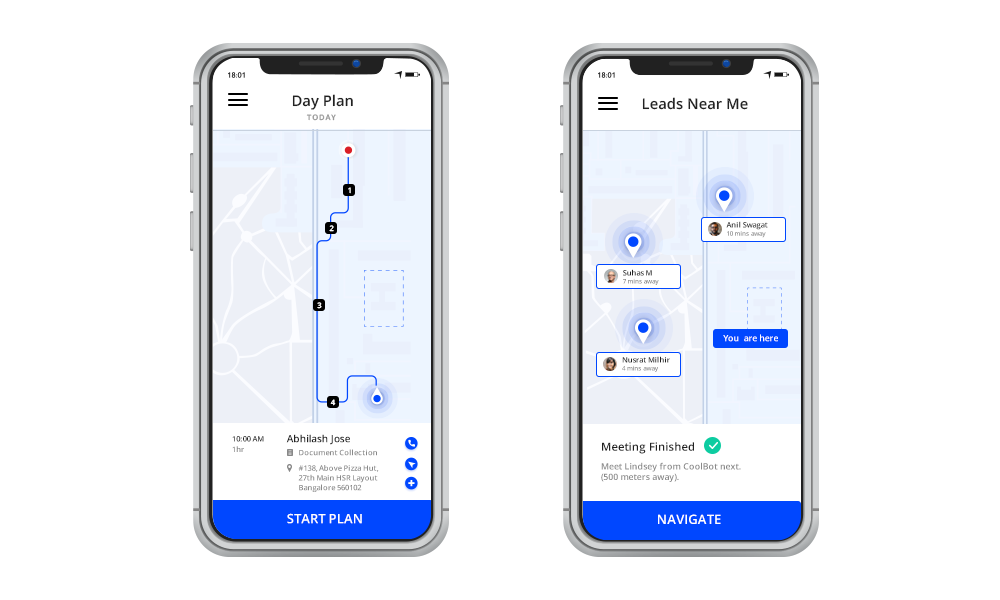
The best part is field service apps automate many tasks, which reduces back-office work and keeps teams in sync. In fact, it can improve field reps’ productivity by 70%.
The role of automation in field force management
Among all the sales teams (inside sales, pre-sales, call center, sales development), the field force is the hardest to control – because you are not with them physically.
Field force automation solves this challenge by establishing a real-time communication channel between the off-site sales team and the onsite team handling sales and admin operations.
Benefits of field force automation for managers
- Eliminate paperwork: A field force automation app allows reps to add meeting notes and upload documents in real time. Managers can review those notes/documents instantly.
- Assign leads/tasks: Distribute new leads to the relevant sales or service person based on certain criteria like zip code, product, or proximity.
- Real-time visibility into people and their progress: Managers get real-time visibility into the location and status of field workers. It helps them track their progress and respond to issues as they arise.
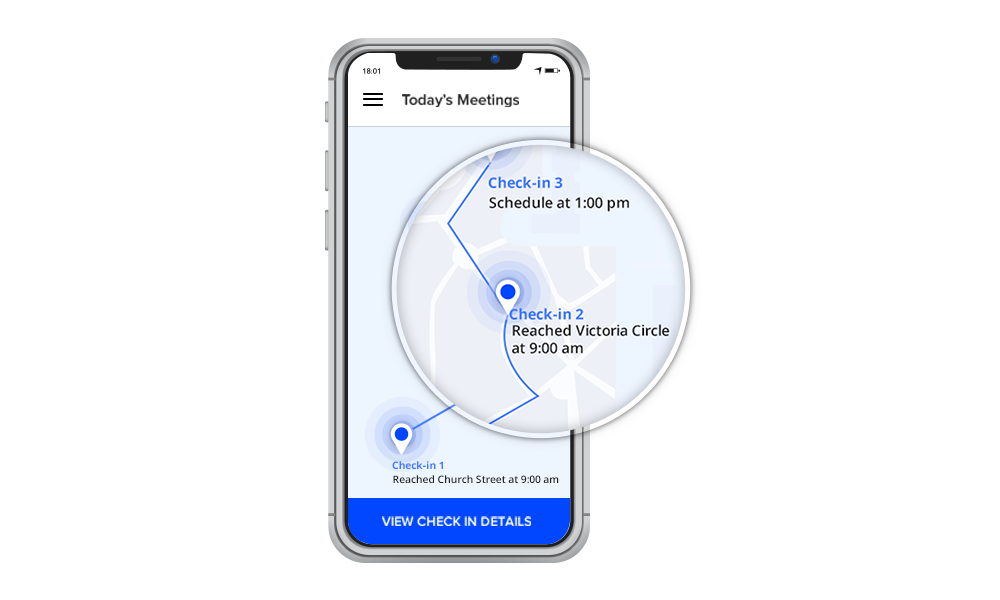
- Increased productivity: Managers can optimize field worker schedules and assign tasks more efficiently.
- Improved decision-making: Field force automation generates a lot of data useful for field operations. With this, managers can analyze field agents’ performance, identify trends and make data-driven decisions.
- Cost savings: By optimizing field worker routes, fuel consumption and overtime can be reduced.
- Better customer service: Field workers can deliver better customer service with the help of tools and information that is auto-collected to resolve customer issues on the spot.
- Efficient resource allocation: With visibility into what’s going on in the field, managers can allocate resources, such as vehicles, equipment, and inventory, more effectively.
Field force apps automate tasks for representatives as well. Here’s how.
Benefits of automation for field workers
- Understand the leads/tasks better: For field sales reps, lead details, and interaction history help finetune their pitch in approaching those prospects. Similarly, for service agents, having issue details helps them prepare well in advance.
- Work on the go: With the mobile app, field reps can sync calls, emails, and texts with mobile phones.
- Get meeting reminders: Field force management software alerts users about upcoming events and tasks that need to be completed at different intervals. For instance, an update on a meeting with a client in a cross-country location can be sent an hour beforehand and thirty minutes afterward.
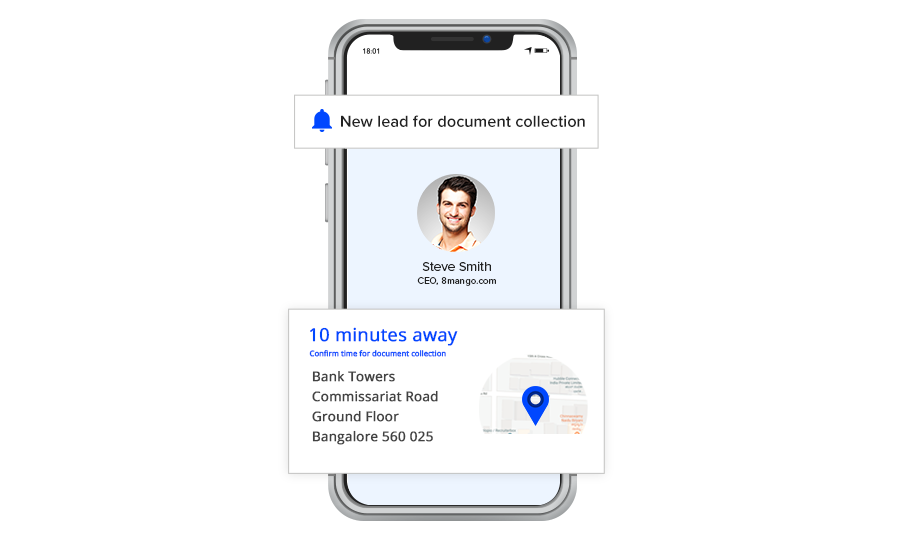
- Find nearby leads: While in a particular location for a meeting, the field force app can recommend leads present in the same location. This could result in more meetings in much lesser travel miles. Also, when a pre-scheduled meeting is canceled by a lead, the sales rep can quickly move onto another lead engagement in the same location.
- Get support remotely: Some field service apps allow video calling/conferencing through which field reps can reach out to their managers/experts for instant help. With this, reps will not have to make multiple visits to the client location for the same issue.
In the next section we’ll look at the field management tools and their essential features that can help you realize the above benefits.
Essential features of field force management software
There’s no one size fits all solution for field force management. Because the tasks and process for a home appliances installation firm will be completely different from selling insurance.
However, there are some common aspects in almost all business processes that require field visits. Such as,
- Attendance
- Task/leads/service assignments
- Access to details regarding the above assignments (e.g., lead details)
- Log updates on jobs assigned + upload documents
- Compensation based on tasks completed
- GPS tracking and route optimization
- Reimbursements for miles traveled
Other aspects of a business process can be served through custom development (if the app vendor supports customization) or by integrating with apps developed for niche use cases. So, here’s the key features checklist for a field force management app.
- Task scheduling: for managers to assign tasks to their team and track progress on those tasks.
- Reminders: automated reminders and notifications for tasks/leads assigned and pending work for the day helps the workforce stay on track of their targets.
- Route optimization: for the field force to be able to see the best route for their meetings.
- GPS tracking: for calculating travel miles and ensuring that your reps actually reached the client’s location in case of any discrepancy.
- Offline accessibility: poor network issues are common in remote locations. Thus, the field force management app should allow reps to continue their work offline and sync automatically when connected to the internet.
- Reporting: to track sales and service metrics. System generated reports save time and effort and are error-free.
- Payroll management: to calculate compensation or incentives based on tasks completed.
- Video conferencing: to help technicians and installation workers connect with experts when required. Advanced field force apps allow integration with wearables and AR/VR technology for better remote assistance.
- Ability to access and upload documents: to reduce paperwork and let operations team get immediate access to client’s documents.
- CRM integration: to keep track of interactions, schedule follow-ups, and streamline operations.
- Accessibility: support or integration with screen reader software (such as JAWS) for visually impaired users.
5 Best software for field force management
Here’s our pick based on our personal experiences and their reviews on Software Suggest, Software Advice, Capterra, G2, and Gartner.
1. LeadSquared
LeadSquared’s Mobile CRM tracks and automates field management tasks. It supports:
- Route tracking
- Lead assignment and meeting reminders
- Offline sync
- Vendor onboarding
More details: https://www.leadsquared.com/field-management-software/
Pricing: Upon request
Pros and cons:
Simple and easy to use. Even works best in low bandwidth.
– Shuvam P. via G2.
Users appreciate that they can easily find lead data with their interaction history on the LeadSquared app. It also seamlessly integrates with punching orders, payment gateway, and numerous other tools.
However, the downside of the app is that it takes some time to update data.
2. BeatRoute
It is a sales force automation platform for distributed field staff and channel partners. It provides:
- Route optimization
- Seller / store onboarding and profiling
- Visual merchandising
- GPS tracking
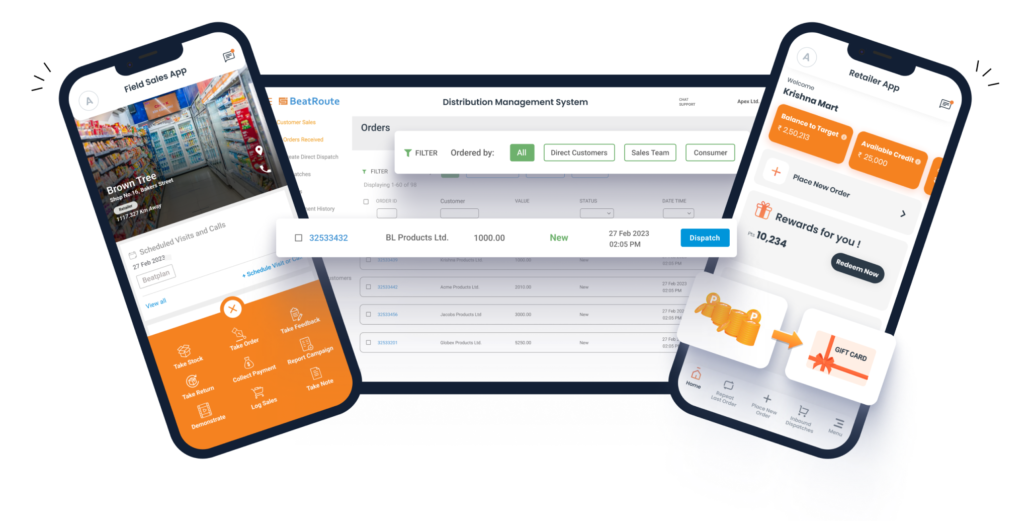
More information: https://beatroute.io/field-sales-app/
Pricing: Starts at $5 per user/month
Pros and cons:
Field service software definitely approved by our field technicians.
– Sébastien R. via Capterra
Users love BeatRoute for instant orders and payments update. It is also appreciated for its tracking capabilities, centralized reporting, and team-wise performance reports.
However, users are not happy with its route map report as the archived outlets are sometimes not synchronized.
3. Praxedo Field Service Management
Known for its field service management capabilities, Praxedo is serving over 40,000 users worldwide. It is best suited for:
- Route optimization
- Real-time technician trackng
- Invoicing
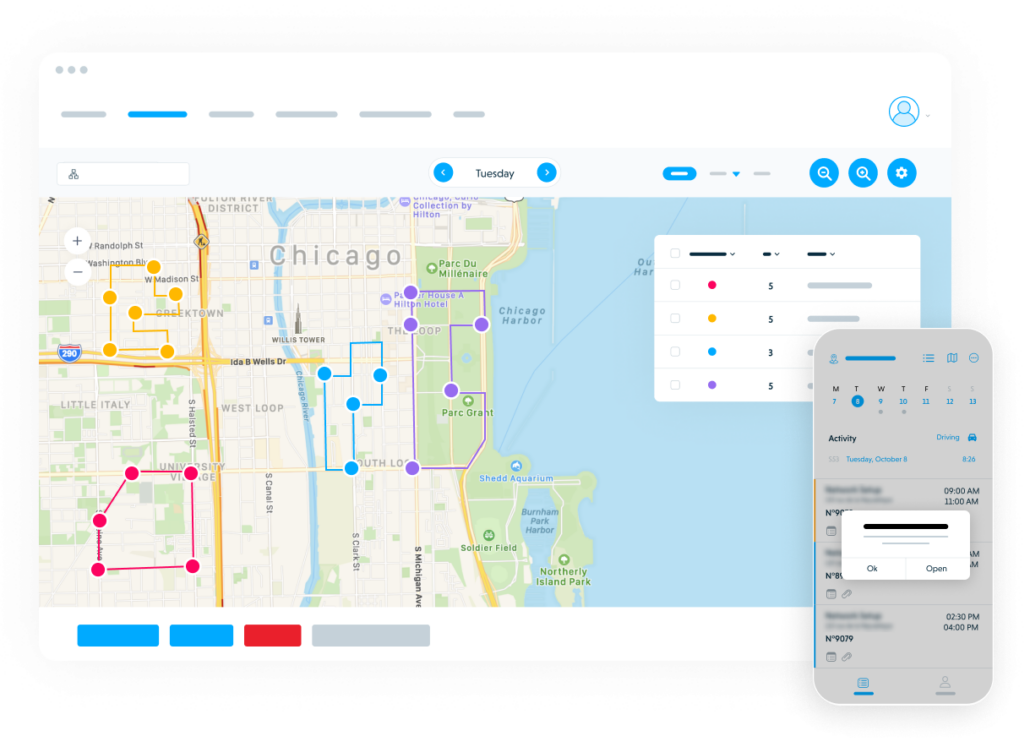
More information: https://www.praxedo.com/
Pricing: starts at $33 per user/month
Pros and cons:
The automatic sending information and reporting has reduced the number of incoming calls and emails. We save time.
– Michael M., Maintenance Manager, Facilities Services, New York (via Capterra).
Users love Praxedo for its compatibility on Android and iOS devices.
As stated by a user on Gartner, technicians who need limited functionalities are not able to opt for a cheaper license. The same user also reported scalability issues with the product.
4. IFS Field Service Management Software
IFS (FSM) help field workers manage their work on mobile devices, connect remotely with engineers and technicians for support, and manage back-office work like raising service request, diagnosing issues, accessing assets, and more on the go.
- Easy integration with planning and scheduling optimization
- Custom reports
- Route optimization and dispatch
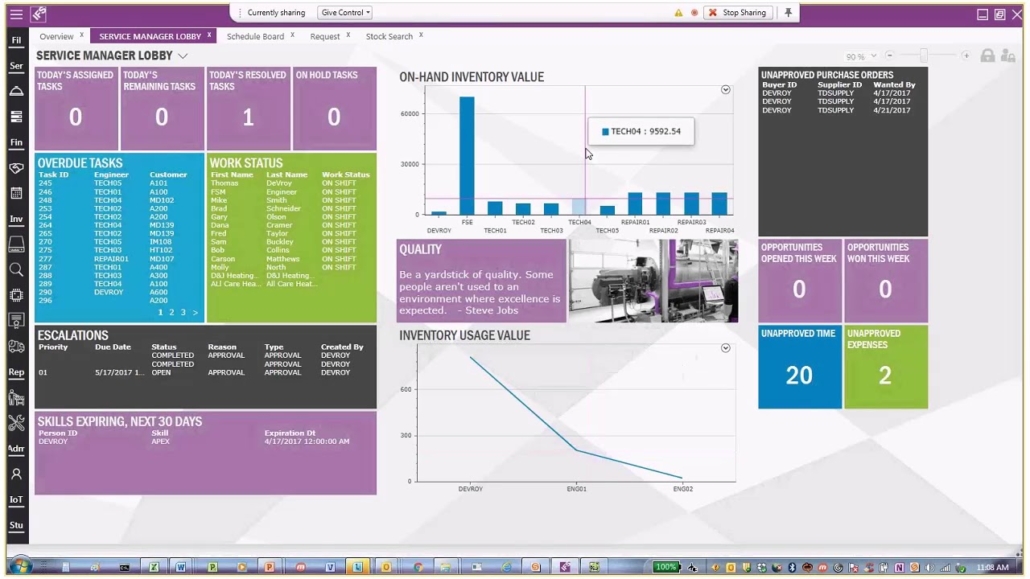
More information: https://www.ifs.com/solutions/capabilities/field-service-management
Pricing: Upon request
Pros and cons:
The mobile application has increased our service efficiencies greatly. The ability to send notifications or emails automatically has cut down the workload of our back-office support team
– A user on Gartner
IFS software is highly configurable and covers all aspects of field service management.
However, users on Software Advice have reported that the product’s customer portal is not up to the mark. Also, the tool is a bit difficult to use.
5. ServiceMax Core
ServiceMax is built on Salesforce platform, and thus, integrates well with CRM.
- Field service operations optimization
- Offline accessibility
- Mobile payments
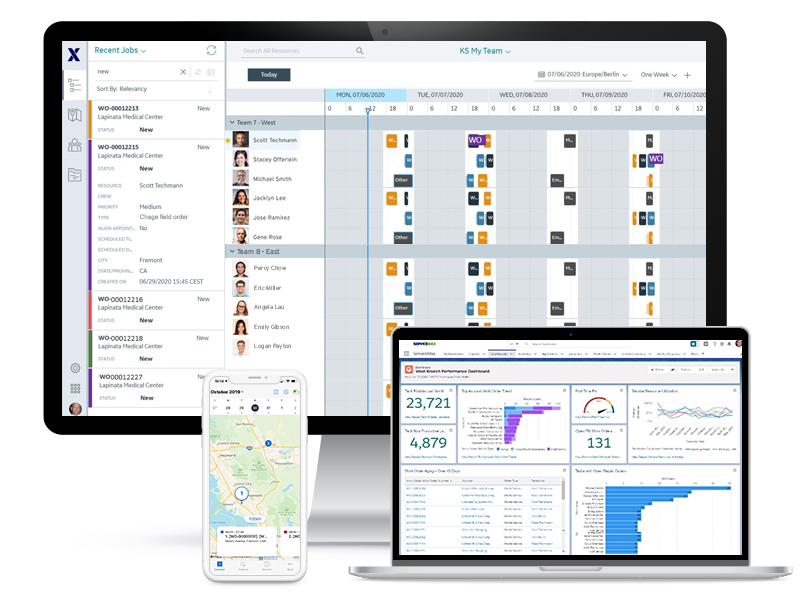
More information: https://www.servicemax.com/products/platform-technology-capabilities
Pricing: Upon request
Pros and cons:
ServiceMax has provided us with a solution that offers us flexibility, scale-ability
– says a user on G2.
Users like ServiceMax’s flexibility and scalability. However, users have reported sync issues while working online. The product also falls short in terms of dynamic scheduling and reporting capabilities.
In conclusion
No matter how much change the digital revolution has brought in our buying behavior, some things will continue to require the active presence of humans, like field force management.
And to aid it, technology brings transparency to the system and enables field reps to work better and faster.
We hope this article helped you get a fair idea about field force management and the tools that make this task easier.
If you’re looking for a field force management app, check out LeadSquared, trusted by brands like Meesho, Dunzo, HomeLane, and many more for their field operations.
FAQs
The field force comprises sales reps, service technicians, delivery agents, and more, who could be full-time or contract workers going door-to-door for their assigned tasks.
A field force manager oversees the activities of a company’s mobile workforce. Their managerial tasks include:
1. Training new joiners
2. Scheduling work for their team
3. Communication and support
4. Tracking the performance of field staff
Field force management aims at improving the performance of a company’s mobile workforce and increasing efficiency in field operations. It involves automating processes and making it easier for managers to track and evaluate their team’s performances and support them when required.
The broad categorization of field forces includes the following segments:
1. Sales: Going door-to-door to meet clients to sell products or services
2. Service: Traveling to customer sites to install, repair, or maintain appliances
3. Delivery: Transporting goods or products to customers
4. Research: Performing research or survey at targeted locations
5. Audit: Performing audits or compliance checks at client locations
6. Marketing: Traveling to different locations to conduct market research or promote products or services







